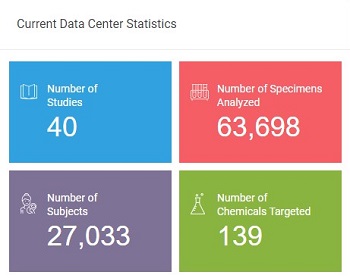Superfund Research Program
July 2021
NIEHS Superfund Research Program (SRP)-funded researchers from all over the country tuned in for the Human Health Exposure Analysis Resource (HHEAR) June 2021 Virtual Grantee Meeting. The event was hosted by the HHEAR Coordinating Center and the NIEHS Exposure Science and the Exposome Webinar Series.
During the public session on June 28, speakers highlighted the value of the Children's Health Exposure Analysis Resource (CHEAR) and the HHEAR Program's laboratory and data analysis services. They also demonstrated how to access the HHEAR Data Center Repository.
Originally focused on prenatal, childhood, and adolescent life stages, the NIEHS-funded CHEAR program evolved into HHEAR to allow researchers to explore how the totality of environmental exposures may affect health and lead to disease across the life course. HHEAR provides NIH-funded researchers access to centralized, high-quality exposure assessment services.

The HHEAR Data Center also provides a publicly accessible ontology, or a common vocabulary, with unambiguous definitions of concepts and variables across studies to allow for pooling of studies.
(Photo courtesy of HHEAR)
Data Center Resources
The HHEAR Data Center was established in 2019 and stores data from biological and environmental samples from CHEAR and HHEAR research studies. The evolving site provides support for storing, maintaining, analyzing, interpreting, curating, and integrating data generated by the HHEAR network.
The repository is searchable by several features, allowing users to compile and download customized datasets from CHEAR and HHEAR research studies. Several new studies will become available later this fall.
A demonstration during the meeting showed NIEHS researchers how to create a profile to access the repository and submission portal. Additionally, attendees learned how to filter results by age range, health research area such as asthma or obesity, and type of HHEAR lab analysis like PFAS or metabolomics.
Analysis Resources
SRP funds three HHEAR National Exposure Assessment Laboratory Network laboratories, which provide state-of-the-art services for analyzing biological and environmental samples. The network comprises principal investigators and laboratory core directors with expertise in exposure science and environmental epidemiology.
HHEAR laboratory services can be used to analyze biological samples, such as blood, or environmental samples, like soil, that are connected with human health data using both untargeted and targeted methods. All SRP grantees are eligible to use this resource to analyze samples and applications are considered on a rolling basis with approximately six review cycles per year.
Information on how to apply is available on the HHEAR website. The next round of applications is due August 13, 2021. Please reach out to HHEARHelp@Westat.com with any questions.
More information on SRP HHEAR resources is available in a 2020 news story.


